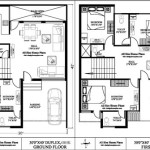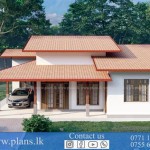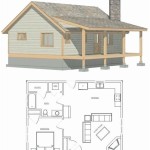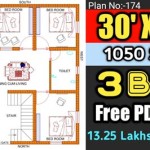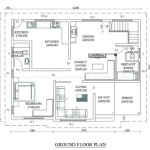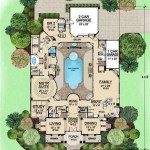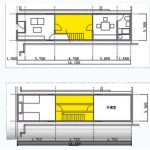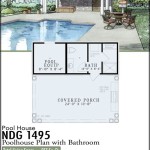House Plan for 30x45 West Facing
A west-facing house on a 30x45 plot presents unique design opportunities and challenges. Maximizing natural light while mitigating the harsh afternoon sun requires careful planning and consideration of various factors, including local climate, lifestyle, and aesthetic preferences. This article explores key elements to consider when designing a west-facing house on a 30x45 plot.
Understanding the Challenges and Advantages of a West-Facing House
West-facing homes receive ample afternoon sunlight, which can be both a blessing and a curse. While abundant natural light is desirable, the intense western sun can lead to excessive heat gain, making the house uncomfortable during warmer months. Careful planning can mitigate these challenges and harness the benefits of natural light.
Site Analysis and Orientation
Before embarking on the design process, a thorough site analysis is crucial. This involves understanding the local climate, prevailing winds, and the surrounding environment. For a west-facing plot, analyzing the sun's path is particularly important. This information will inform decisions regarding window placement, shading devices, and landscaping.
Optimizing the Layout for a 30x45 Plot
A 30x45 plot offers ample space for a comfortable and functional home. The layout should be designed to maximize cross-ventilation and minimize direct western exposure. Positioning living spaces towards the north and east can help reduce heat gain, while bedrooms can be strategically placed towards the west with appropriate shading solutions.
Key Design Considerations
Several design elements are crucial for a comfortable and energy-efficient west-facing house:
- Window Placement and Shading: Strategically placing windows on the north and east sides maximizes natural light without excessive heat gain. West-facing windows should be minimized and equipped with shading devices like overhangs, vertical fins, or exterior blinds to block the harsh afternoon sun. Using tinted or reflective glass can also help reduce heat absorption.
- Wall Insulation and Roof Design: Proper insulation in walls and roofs is essential for regulating indoor temperatures. A well-insulated roof with light-colored roofing materials can reflect sunlight and reduce heat buildup.
- Landscaping: Strategic landscaping can play a significant role in mitigating the western sun's impact. Planting deciduous trees on the west side provides shade during summer while allowing sunlight to penetrate during winter. Shrubs and climbers can also be used to create shade and improve the microclimate around the house.
- Ventilation: Maximizing cross-ventilation is crucial for maintaining a comfortable indoor environment. Placement of windows and doors should be designed to encourage natural airflow. Ceiling fans and mechanical ventilation systems can further enhance air circulation.
- Room Placement: Living areas, kitchens, and dining rooms can be positioned towards the cooler north and east sides of the house. Bedrooms and less frequently used spaces can be placed on the west side with appropriate shading solutions.
- Exterior Color Palette: Light-colored exterior walls reflect more sunlight than darker colors, helping to keep the house cooler. Choosing light and reflective colors for the exterior can contribute to energy efficiency.
Material Selection
Choosing appropriate building materials is essential for thermal comfort and energy efficiency. Materials with high thermal mass, such as concrete or brick, can absorb heat during the day and release it slowly at night, helping to regulate indoor temperatures. Using locally sourced materials can also reduce the environmental impact of construction.
Incorporating Sustainable Features
Incorporating sustainable features into the design can further enhance the energy efficiency and environmental friendliness of the house. Solar panels can be installed on the roof to harness the abundant sunlight and generate electricity. Rainwater harvesting systems can collect and store rainwater for irrigation and other non-potable uses.
Working with Professionals
Designing a well-functioning and comfortable west-facing house requires expertise. Collaborating with an architect and other building professionals is essential for ensuring that the design meets the specific needs and requirements of the occupants while addressing the challenges posed by a west-facing orientation.
Budgeting and Planning
Establishing a realistic budget and a detailed construction plan is crucial for a successful project. The cost of construction will depend on various factors, including the size of the house, the materials used, and the complexity of the design. Working closely with professionals can help ensure that the project stays within budget and on schedule.
By carefully considering these elements, a west-facing house on a 30x45 plot can be designed to be a comfortable, energy-efficient, and aesthetically pleasing home.

30x50 Feet 1500 Sqft West Facing Corner House Design With Vastu 165 Gaj 9x15 Mtr Id 097

35x60 House Plan 35 60 Home Design By 2100 Sqft Ghar Naksha

18 X 50 House Plan Ii Ghar Ka Naksha 900 Sqft Design

30 X 36 House Design Ii Ghar Ka Naksha Plan

35x60 House Plan 35 60 Home Design By 2100 Sqft Ghar Naksha

35x60 House Plan 35 60 Home Design By 2100 Sqft Ghar Naksha

House Plans With Photos

House Plans With Photos

Introducing The Soaring Eagle Adlar 5 0 Truck Camper

What You Need To Know About N Regulations For Stairs Aussie Barading

